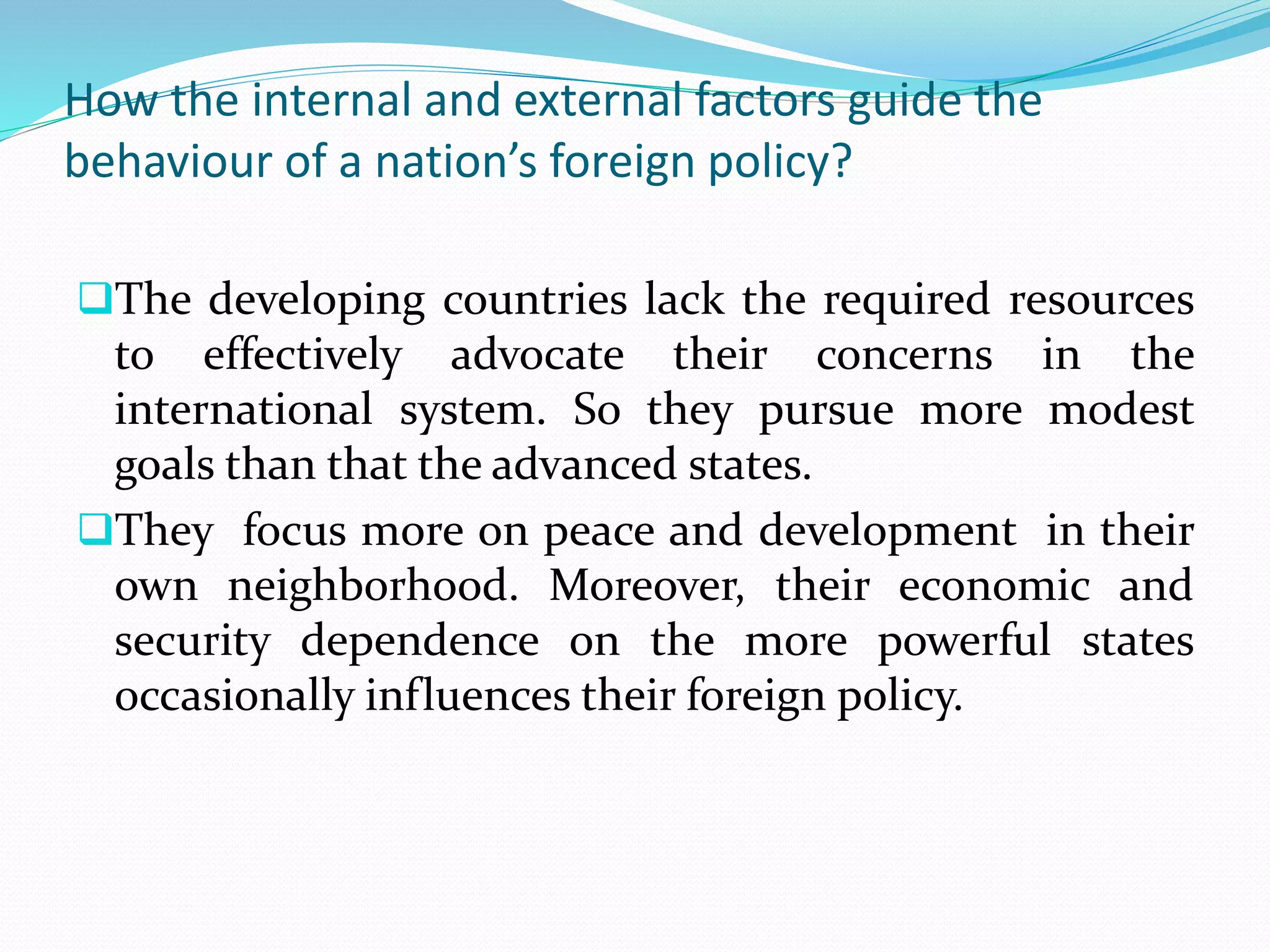The document discusses Jawaharlal Nehru's view that foreign relations are the fundamental test of a country's independence. It then provides context on India's foreign policy goals of promoting peace and maintaining just relations between nations according to the constitution. Several principles and determinants of India's foreign policy are outlined, including non-alignment and focusing on neighborhood peace and development.

































